Title search results
Showing 1488461 - 1488480 of 1502757 items
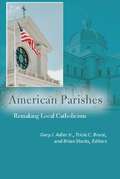
American Parishes: Remaking Local Catholicism (Catholic Practice in North America)
By Gary J. Adler Jr., Tricia C. Bruce, and Brian Starks. 2019
Parishes are the missing middle in studies of American Catholicism. Between individual Catholics and a global institution, the thousands of…
local parishes are where Catholicism gets remade. American Parishes showcases what social forces shape parishes, what parishes do, how they do it, and what this says about the future of Catholicism in the United States. Expounding an embedded field approach, this book displays the numerous forces currently reshaping American parishes. It draws from sociology of religion, culture, organizations, and race to illuminate basic parish processes, like leadership and education, and ongoing parish struggles like conflict and multiculturalism. American Parishes brings together contemporary data, methods, and questions to establish a sociological re-engagement with Catholic parishes and a Catholic re-engagement with sociological analysis. Contributions by leading social scientists highlight how community, geography, and authority intersect within parishes. It illuminates and analyzes how growing racial diversity, an aging religious population, and neighborhood change affect the inner workings of parishes. Contributors: Gary J. Adler Jr., Nancy Ammerman, Mary Jo Bane, Tricia C. Bruce, John A. Coleman, S.J., Kathleen Garces-Foley, Mary Gray, Brett Hoover, Courtney Ann Irby, Tia Noelle Pratt, and Brian Starks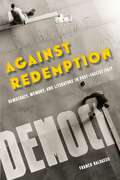
WINNER, HELEN AND HOWARD R. MARRARO PRIZE IN ITALIAN HISTORYDiscloses the richness of ideas and sheds light on the controversy…
that characterized the transition from fascism to democracy, examining authors, works and memories that were subsequently silenced by Cold War politics.How a shared memory of Fascism and its cultural heritage took shape is still today the most disputed question of modern Italy, crossing the boundaries between academic and public discourse. Against Redemption concentrates on the historical period in which disagreement was at its highest: the transition between the downfall of Mussolini in July 1943 and the victory of the Christian Democrats over the Left in the 1948 general elections. By dispelling the silence around the range of opinion in the years before the ideological struggle fossilized into Cold War oppositions, this book points to early postwar literary practices as the main vehicle for intellectual dissent, shedding new light on the role of cultural policies in institutionalizing collective memory. During Italy’s transition to democracy, competing narratives over the recent traumatic past emerged and crystallized, depicting the country’s break with Mussolini’s regime as a political and personal redemption from its politics of exclusion and unrestrained use of violence. Conversely, outstanding authors such as Elsa Morante, Carlo Levi, Alberto Moravia, and Curzio Malaparte, in close dialogue with remarkable but now-neglected figures, stressed the cultural continuity between the new democracy and Fascism, igniting heated debates from opposite political standpoints. Their works addressed questions such as the working through of national defeat, Italian responsibility in World War II, and the Holocaust, revealing how the social, racial, and gender biases that characterized Fascism survived after its demise and haunted the newborn democracy.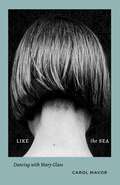
Like the Sea: Dancing with Mary Glass
By Carol Mavor. 2025
An exploration of the mythical Mary Glass—her art, her life, and her timesMary Glass (1946–2021) was an innovative modern dancer…
and choreographer, quietly instrumental to the San Francisco Bay Area art scene of the 1960s and ’70s—barely known today—admired for her experimental movements based on sounds and images of the Pacific.As a child, Mary Glass took her first dance class with Anna Halprin on her famed redwood dance deck in Marin County’s Kent Woodlands. Dancing with the blue sky as her ceiling—surrounded by magical madrones and redwoods—the effect on Mary Glass was seismic. Fittingly, Halprin called her classes “dance experiences.” Mary Glass’s lifestyle, her anxieties, and her dance reflect the human geography of Northern California: Happenings, Zero Population Growth (ZPG), feminism, same-sex love, civil rights, Vietnam, environmentalism. Cascading in the waves of the politics of the time was Mary Glass’s anorexia, an unexpected pregnancy, and her life-long love affair with the Black painter Eliza Vesper.Today Mary Glass is remembered by an increasingly diminishing handful of devotees. Author Carol Mavor is one of them.In this daring work of fictocriticism, where “feelings are facts,” Like the Sea asks its readers—just as Anna Halprin asked of each of her young students as they were leaving class—“What are you taking with you from the natural world?”Halprin’s words will resonate in Mary’s mind her entire lifetime and beyond.In the after-time of the prescient Mary Glass—with its decline of sea kelp and warm Decembers— Mavor herself considers the Anthropocene, tasting extinction as if swallowing the long-gone abalone mollusks of her own Bay-Area childhood: salty, like the sea, but strangely sweet. And from it, Mavor delivers the reader to the far-away country of the not-so-distant past to help envision a future.There are no photographs or films of Mary Glass dancing. The life of Mary Glass is nearly forgotten, her memory on the edge of extinction. In meditative, dazzling and lyrical prose, Like the Sea tells us—like the ocean’s music in our ear—we need to remember extinction to imagine our way out of it.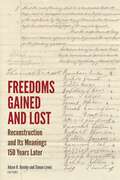
Freedoms Gained and Lost: Reconstruction and Its Meanings 150 Years Later (Reconstructing America)
By Adam H. Domby and Simon Lewis. 2022
Reconstruction is one of the most complex, overlooked, and misunderstood periods of American history. The thirteen essays in this volume…
address the multiple struggles to make good on President Abraham Lincoln’s promise of a “new birth of freedom” in the years following the Civil War, as well as the counter-efforts including historiographical ones—to undermine those struggles. The forms these struggles took varied enormously, extended geographically beyond the former Confederacy, influenced political and racial thought internationally, and remain open to contestation even today. The fight to establish and maintain meaningful freedoms for America’s Black population led to the apparently concrete and permanent legal form of the three key Reconstruction Amendments to the U.S. Constitution, as well as the revised state constitutions, but almost all of the latter were overturned by the end of the century, and even the former are not necessarily out of jeopardy. And it was not just the formerly enslaved who were gaining and losing freedoms. Struggles over freedom, citizenship, and rights can be seen in a variety of venues. At times, gaining one freedom might endanger another. How we remember Reconstruction and what we do with that memory continues to influence politics, especially the politics of race, in the contemporary United States. Offering analysis of educational and professional expansion, legal history, armed resistance, the fate of Black soldiers, international diplomacy post-1865 and much more, the essays collected here draw attention to some of the vital achievements of the Reconstruction period while reminding us that freedoms can be won, but they can also be lost.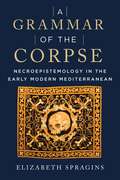
A Grammar of the Corpse: Necroepistemology in the Early Modern Mediterranean
By Elizabeth Spragins. 2023
No matter when or where one starts telling the story of the battle of al-Qasr al-Kabir (August 4, 1578), the…
precipitating event for the formation of the Iberian Union, one always stumbles across dead bodies—rotting in the sun on abandoned battlefields, publicly displayed in marketplaces, exhumed and transported for political uses. A Grammar of the Corpse: Necroepistemology in the Early Modern Mediterranean proposes an approach to understanding how dead bodies anchored the construction of knowledge within early modern Mediterranean historiography.A Grammar of the Corpse argues that the presence of the corpse in historical narrative is not incidental. It fills a central gap in testimonial narrative: providing tangible evidence of the narrator’s reliability while provoking an affective response in the audience. The use of corpses as a source of narrative authority mobilizes what cultural historians, philosophers, and social anthropologists have pointed to as the latent power of the dead for generating social and political meaning and knowledge. A Grammar of the Corpse analyzes the literary, semiotic, and epistemological function these bodies serve within text and through language. It finds that corpses are indexically present and yet disturbingly absent, a tension that informs their fraught relationship to their narrators’ own bodies and makes them useful but subversive tools of communication and knowledge.A Grammar of the Corpse complements recent work in medieval and early modern Iberian and Mediterranean studies to account for the confessional, ethnic, linguistic, and political diversity of the region. By reading Arabic texts alongside Portuguese and Spanish accounts of this key event, the book responds to the fundamental provocation of Mediterranean studies to work beyond the linguistic limitations of modern national boundaries.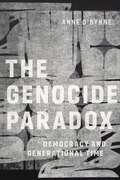
The Genocide Paradox: Democracy and Generational Time
By Anne O'Byrne. 2023
We regard genocidal violence as worse than other sorts of violence—perhaps the worst there is. But what does this say…
about what we value about the genos on which nations are said to be founded? This is an urgent question for democracies. We value the mode of being in time that anchors us in the past and in the future, that is, among those who have been and those who might yet be. If the genos is a group constituted by this generational time, the demos was invented as the anti-genos, with no criterion of inheritance and instead only occurring according to the interruption of revolutionary time. Insofar as the demos persists, we experience it as a sort of genos, for example, the democratic nation state. As a result, democracies are caught is a bind, disavowing genos-thinking while cherishing the temporal forms of genos-life; they abhor genocidal violence but perpetuate and disguise it. This is the genocide paradox. O’Byrne traces the problem through our commitment to existential categories from Aristotle to the life taxonomies of Linneaus and Darwin, through anthropologies of kinship that tether us to the social world, the shortfalls of ethical theory, into the history of democratic theory and the defensive tactics used by real existing democracies when it came to defining genocide for the U.N. Genocide Convention. She argues that, although models of democracy all make room for contestation, they fail to grasp its generational structure or acknowledge the generational content of our lives. They cultivate ignorance of the contingency and precarity of the relations that create and sustain us. The danger of doing so is immense. It leaves us unprepared for confronting democracy’s deficits and its struggle to entertain multiple temporalities. In addition, it leaves us unprepared for understanding the relation between demos and violence, and the ability of good enough citizens to tolerate the slow-burning destruction of marginalized peoples. What will it take to envision an anti-genocidal democracy?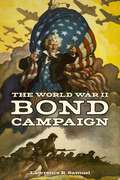
The World War II Bond Campaign (World War II: The Global, Human, and Ethical Dimension)
By Lawrence R. Samuel. 2025
How America’s greatest marketing triumph in World War II shaped race, ethnicity, and class in modern AmericaThe World War II…
Bond Campaign is a history of the World War II bond drive led by the federal government, an effort called the most successful marketing operation in history. By the war’s end, some 85 million Americans had spent $186 billion in an unprecedented outpouring of patriotism that contributed to the military victory and the prosperity of the following decades. The FDR administration used bonds to raise capital to support the war and promote national unity within the context of the nation’s increasingly pluralistic society as the “melting pot” theory was retired. African Americans, Euro-Americans, and labor union members enthusiastically bought bonds to express national loyalty but also to demonstrate racial, ethnic, or class pride, a reflection of their dualistic or “hyphenated” identities.Drawing on various primary sources, The World War II Bond Campaign illustrates how the Treasury Department’s multicultural marketing strategies tapped into Americans’ aspirations alongside their patriotic impulses. Citizens of all social and economic backgrounds eagerly responded to what can be seen as the selling of America, making the subject an ideal lens to view national identity at a critical moment in the country’s history. The author contends that the drive’s success helped pave the way for the emergence of both the civil rights movement and the vigorous consumer culture of the postwar years.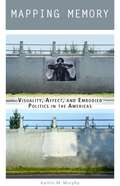
Mapping Memory: Visuality, Affect, and Embodied Politics in the Americas
By Kaitlin M. Murphy. 2019
In Mapping Memory, Kaitlin M. Murphy investigates the use of memory as a means of contemporary sociopolitical intervention. Mapping Memory…
focuses specifically on visual case studies, including documentary film, photography, performance, new media, and physical places of memory, from sites ranging from the Southern Cone to Central America and the U.S.–Mexican borderlands. Murphy develops new frameworks for analyzing how visual culture performs as an embodied agent of memory and witnessing, arguing that visuality is inherently performative. By analyzing the performative elements, or strategies, of visual texts—such as embodiment, reenactment, haunting, and the performance of material objects and places Murphy elucidates how memory is both anchored in and extracted from specific bodies, objects, and places. Drawing together diverse theoretical strands, Murphy originates the theory of “memory mapping”, which tends to the ways in which memory is strategically deployed in order to challenge official narratives that often neglect or designate as transgressive certain memories or experiences. Ultimately, Murphy argues, memory mapping is a visual strategy to ask, and to challenge, why certain lives are rendered visible and thus grievable and others not.
Plato and the Invention of Life
By Michael Naas. 2018
The question of life, Michael Naas argues, though rarely foregrounded by Plato, runs through and structures his thought. By characterizing…
being in terms of life, Plato in many of his later dialogues, including the Statesman, begins to discover—or, better, to invent—a notion of true or real life that would be opposed to all merely biological or animal life, a form of life that would be more valuable than everything we call life and every life that can actually be lived.This emphasis on life in the Platonic dialogues illuminates the structural relationship between many of Plato’s most time-honored distinctions, such as being and becoming, soul and body. At the same time, it helps to explain the enormous power and authority that Plato’s thought has exercised, for good or ill, over our entire philosophical and religious tradition.Lucid yet sophisticated, Naas’s account offers a fundamental rereading of what the concept of life entails, one that inflects a range of contemporary conversations, from biopolitics, to the new materialisms, to the place of the human within the living world.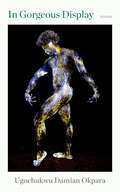
In Gorgeous Display
By Ugochukwu Damian Okpara. 2023
One of Book Riot's Must-Have New Poetry for Fall 2023 The remarkable debut collection by a young Nigerian queer poet.“here…
/ i am not his image / & i envy it / i shut my eyes against what is left / the crackling softness of life / like communion / desire is a marathon / a baton waiting for your grip / here / i am not running / neither is he / i sit with a man for the first time / & we talk about war . . .”—FROM “BEAUTIFUL BOY WITH GARLANDS AROUND HIS WAIST”In Gorgeous Display, by Nigerian poet Ugochukwu Damian Okpara, is a volume dedicated to the memory of those lost to anti-queer violence in Nigeria and elsewhere. In this first full-length collection of his work, Okpara examines queer male identity, effeminacy, and exile, offering meditations on desire and sanctuary, freedom and estrangement. Forty-three poems pierce familial relationships, safety, fear, and anxiety portrayed through the outward sign of hand tremors, queer lynching, survival, hope, the emptiness of exile, and reclamation of the self. Embracing the ephemeral and spiritual nature of physical beauty, Okpara also reveals the scars of queer displacement, illuminating the ways that leaving home is never quite the utopia one hopes for and how often the ache of abandonment can haunt a life lived in the present.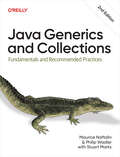
Java Generics and Collections
By Maurice Naftalin, Philip Wadler. 2025
Java Generics and Collections has been the go-to guide to generics for more than a decade. This second edition covers…
Java 21, providing a clear guide to generics from their most common uses to the strangest corner cases, giving you everything you need to know to use and write generic APIs effectively. It covers the collections library thoroughly, so you'll always know how and when to use each collection for any given task. And it explains stream processing, so you'll know which model to use and how they interoperate to get the best out of the platform library.This indispensable guide covers:Fundamentals of generics: type parameters and generic methodsSubtyping and wildcardsGenerics and reflectionDesign patterns for genericsSets, queues, lists, maps, and their implementationsConcurrent programming and thread safety with collectionsPerformance of different collection implementationsBest practices for using and extending the Java collections frameworkDesign philosophy and comparison with other collections libraries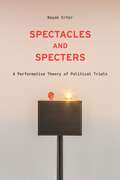
Spectacles and Specters: A Performative Theory of Political Trials
By Başak Ertür. 2023
WINNER, SLSA SOCIO-LEGAL THEORY AND HISTORY PRIZESHORTLISTED, THE HART-SLSA BOOK PRIZESpectacles and Specters draws on theories of performativity to conceptualize…
the entanglements of law and political violence, offering a radical departure from accounts that consider political trials as instrumental in exercising or containing political violence. Legal scholar Başak Ertür argues instead that making sense of the often incalculable interpenetrations of law, politics, and violence in trials requires shifting the focus away from law’s instrumentality to its performativity.Ertür develops a theory of political trials by reconstructing and building on a legacy of critical thought on Nuremberg in close engagement with theories of performativity. She then offers original case studies that introduce a new perspective by looking beyond the Holocaust trials, to the Armenian genocide and its fragmentary legal aftermaths. These cases include the 1921 trial of Soghomon Tehlirian, the 2007-21 Hrant Dink Murder Trial, and the 2015 case before the European Court of Human Rights concerning the denial of the Armenian genocide. Enabling us to capture the various modalities in which the political emerges in, through and in relation to legal forms on the stage of the trial, this focus on law’s performativity also allows us to account for how sovereign schemes can misfire and how trials can come to have unintended political lives and afterlives. Further, it reveals how law is entangled with and perpetuates certain histories of violence, rather than simply ever mastering these histories or providing closure.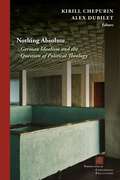
Nothing Absolute: German Idealism and the Question of Political Theology (Perspectives in Continental Philosophy)
By Kirill Chepurin and Alex Dubilet. 2021
Featuring scholars at the forefront of contemporary political theology and the study of German Idealism, Nothing Absolute explores the intersection…
of these two flourishing fields. Against traditional approaches that view German Idealism as a secularizing movement, this volume revisits it as the first fundamentally philosophical articulation of the political-theological problematic in the aftermath of the Enlightenment and the advent of secularity.Nothing Absolute reclaims German Idealism as a political-theological trajectory. Across the volume’s contributions, German thought from Kant to Marx emerges as crucial for the genealogy of political theology and for the ongoing reassessment of modernity and the secular. By investigating anew such concepts as immanence, utopia, sovereignty, theodicy, the Earth, and the world, as well as the concept of political theology itself, this volume not only rethinks German Idealism and its aftermath from a political-theological perspective but also demonstrates what can be done with (or against) German Idealism using the conceptual resources of political theology today.Contributors: Joseph Albernaz, Daniel Colucciello Barber, Agata Bielik-Robson, Kirill Chepurin, S. D. Chrostowska, Saitya Brata Das, Alex Dubilet, Vincent Lloyd, Thomas Lynch, James Martel, Steven Shakespeare, Oxana Timofeeva, Daniel Whistler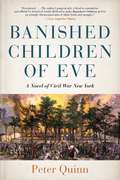
Banished Children of Eve: A Novel of Civil War New York
By Peter Quinn. 2021
Named one of the top twenty books every Irish American should read by Irish CentralThe Civil War has just entered…
its third bloody year, and the North is about to impose its first military draft, a decision that will spark the most devastating and destructive urban riot in American history. Banished Children of Eve traces that event as its tentacles grip New York City. The cast is drawn from every stratum: a likeable and laconic Irish-American hustler, an ambitious and larcenous Yankee stockbroker, an immigrant serving girl, a beautiful and mysterious mulatto actress and her white minstrel lover as well as a cluster of real-life characters, including scheming, ever-pompous General George McClellan; fiery, fierce Archbishop “Dagger John” Hughes; and fast-declining musical genius Stephen Foster. The fates of these characters coalesce in the cataclysm of the Draft Riots, as a pivotal period in the history of New York and the nation is painfully, vividly, magically bought to life.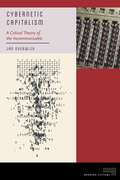
Cybernetic Capitalism: A Critical Theory of the Incommunicable (Meaning Systems)
By Jan Overwijk. 2025
A Conceptual Interrogation of Capital in a Cybernetic Environment Cybernetic Capitalism presents a groundbreaking synthesis of Niklas Luhmann's systems theory…
and critical theory. Overwijk examines how neoliberal capitalism now thrives on the management of incommunicability rather than the pursuit of total communicability, harnessing ecological complexity as its driving force. Contrary to earlier critiques that highlighted capitalism's push to render all social life fully communicable, the current era encourages market incalculability, profits from user unpredictability, and spurs serviceworkers' creativity.This ecological logic resonates with the extractivist drive of the Anthropocene, reframing our understanding of capitalism as an adaptive, environment-attuned system. Cybernetic Capitalism also exposes how these dynamics intersect with the cultural rise of conspiracy theories and radical-right irrationalism. By illuminating capitalism's paradoxical reliance on both rationalist and irrationalist currents, Overwijk provides a vital new lens for interpreting the complex politics of our time.
Hamilton Heights and Sugar Hill: Alexander Hamilton’s Old Harlem Neighborhood Through the Centuries
By Davida Siwisa James. 2024
Explores four centuries of colonization, land divisions, and urban development around this historic landmark neighborhood in West HarlemIt was the…
neighborhood where Alexander Hamilton built his country home, George Gershwin wrote his first hit, a young Norman Rockwell discovered he liked to draw, and Ralph Ellison wrote Invisible Man. Through words and pictures, Hamilton Heights and Sugar Hill traces the transition of this picturesque section of Harlem from lush farmland in the early 1600s to its modern-day growth as a unique Manhattan neighborhood highlighted by stunning architecture, Harlem Renaissance gatherings, and the famous residents who called it home. Stretching from approximately 135th Street and Edgecombe Avenue to around 165th, all the way to the Hudson River, this small section in the Heights of West Harlem is home to so many significant events, so many extraordinary people, and so much of New York’s most stunning architecture, it’s hard to believe one place could contain all that majesty. Author Davida Siwisa James brings to compelling literary life the unique residents and dwelling places of this Harlem neighborhood that stands at the heart of the country’s founding. Here she uncovers the long-lost history of the transitions to Hamilton Grange in the aftermath of Alexander Hamilton’s death and the building boom from about 1885 to 1930 that made it one of Manhattan’s most historic and architecturally desirable neighborhoods, now and a century ago. The book also shares the story of the LaGuardia High School of Music & Art, one of the fi rst in the nation to focus on arts and music. The author chronicles the history of the James A. Bailey House, as well as the Morris-Jumel Mansion, Manhattan’s oldest surviving residence and famously known as George Washington’s headquarters at the start of the American Revolution. By telling the history of its vibrant people and the beautiful architecture of this lovely, well-maintained historic landmark neighborhood, James also dispels the misconception that Harlem was primarily a ghetto wasteland. The book also touches upon the Great Migration of Blacks leaving the South who landed in Harlem, helping it become the mecca for African Americans, including such Harlem Renaissance artists and luminaries as Thurgood Marshall, Count Basie, Duke Ellington, Mary Lou Williams, Paul Robeson, Regina Anderson Andrews, and W. E. B. Du Bois.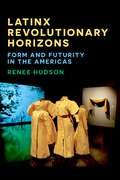
Latinx Revolutionary Horizons: Form and Futurity in the Americas
By Renee Hudson. 2024
A necessary reconceptualization of Latinx identity, literature, and politicsIn Latinx Revolutionary Horizons, Renee Hudson theorizes a liberatory latinidad that is…
not yet here and conceptualizes a hemispheric project in which contemporary Latinx authors return to earlier moments of revolution. Rather than viewing Latinx as solely a category of identification, she argues for an expansive, historicized sense of the term that illuminates its political potential.Claiming the “x” in Latinx as marking the suspension and tension between how Latin American descended people identify and the future politics the “x” points us toward, Hudson contends that latinidad can signal a politics grounded in shared struggles and histories rather than merely a mode of identification. In this way, Latinx Revolutionary Horizons reads against current calls for cancelling latinidad based on its presumed anti-Black and anti-Indigenous framework. Instead, she examines the not-yet-here of latinidad to investigate the connection between the revolutionary history of the Americas and the creation of new genres in the hemisphere, from conversion narratives and dictator novels to neoslave narratives and testimonios.By comparing colonialisms, she charts a revolutionary genealogy across a range of movements such as the Mexican Revolution, the Filipino People Power Revolution, resistance to Trujillo in the Dominican Republic, and the Cuban Revolution. In pairing nineteenth-century authors alongside contemporary Latinx ones, Hudson examines a longer genealogy of Latinx resistance while expanding its literary canon, from the works of José Rizal and Martin Delany to those of Julia Alvarez, Jessica Hagedorn, and Leslie Marmon Silko. In imagining a truly transnational latinidad, Latinx Revolutionary Horizons thus rewrites our understanding of the nationalist formations that continue to characterize Latinx Studies.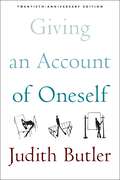
What does it mean to lead a moral life? In their first extended study of moral philosophy, Judith Butler offers…
a provocative outline for a new ethical practice—one responsive to the need for critical autonomy yet grounded in the opacity of the human subject. Butler takes as their starting point one’s ability to answer the questions “What have I done?” and “What ought I to do?” They show that these questions can be answered only by asking a prior question, “Who is this ‘I’ who is under an obligation to give an account of itself and to act in certain ways?” Because I find that I cannot give an account of myself without accounting for the social conditions under which I emerge, ethical reflection requires a turn to social theory. In three powerfully crafted and lucidly written chapters, Butler demonstrates how difficult it is to give an account of oneself, and how this lack of self-transparency and narratibility is crucial to an ethical understanding of the human. In dialogue with Adorno, Levinas, Foucault, and other thinkers, they eloquently argue the limits, possibilities, and dangers of contemporary ethical thought. Butler offers a critique of the moral self, arguing that the transparent, rational, and continuous ethical subject is an impossible construct that seeks to deny the specificity of what it is to be human. We can know ourselves only incompletely, and only in relation to a broader social world that has always preceded us and already shaped us in ways we cannot grasp. If inevitably we are partially opaque to ourselves, how can giving an account of ourselves define the ethical act? And doesn’t an ethical system that holds us impossibly accountable for full self-knowledge and self-consistency inflict a kind of psychic violence, leading to a culture of self-beratement and cruelty? How does the turn to social theory offer us a chance to understand the specifically social character of our own unknowingness about ourselves? By recasting ethics as a project in which being ethical means becoming critical of norms under which we are asked to act, but which we can never fully choose, Butler illuminates what it means for us as “fallible creatures” to create and share an ethics of vulnerability, humility, and ethical responsiveness.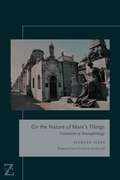
On the Nature of Marx's Things: Translation as Necrophilology (Lit Z)
By Jacques Lezra. 2018
On the Nature of Marx’s Things is a major rethinking of the Marxian tradition, one based not on fixed things…
but on the inextricable interrelation between the material world and our language for it. Lezra traces to Marx’s earliest writings a subterranean, Lucretian practice that he calls necrophilological translation that continues to haunt Marx’s inheritors. This Lucretian strain, requiring that we think materiality in non-self-evident ways, as dynamic, aleatory, and always marked by its relation to language, raises central questions about ontology, political economy, and reading.“Lezra,” writes Vittorio Morfino in his preface, “transfers all of the power of the Althusserian encounter into his conception of translation.” Lezra’s expansive understanding of translation covers practices that put different natural and national languages into relation, often across periods, but also practices or mechanisms internal to each language. Obscured by later critical attention to the contradictory lexicons—of fetishism and of chrematistics—that Capital uses to describe how value accrues to commodities, and by the dialectical approach that’s framed Marx’s work since Engels sought to marry it to the natural philosophy of his time, necrophilological translation has a troubling, definitive influence in Marx’s thought and in his wake. It entails a radical revision of what counts as translation, and wholly new ways of imagining what an object is, of what counts as matter, value, sovereignty, mediation, and even number. In On the Nature of Marx’s Things a materialism “of the encounter,” as recent criticism in the vein of the late Althusser calls it, encounters Marxological value-form theory, post-Schmittian divisible sovereignty, object-oriented-ontologies and the critique of correlationism, and philosophies of translation and untranslatability in debt to Quine, Cassin, and Derrida. The inheritors of the problems with which Marx grapples range from Spinoza’s marranismo, through Melville’s Bartleby, through the development of a previously unexplored Freudian political theology shaped by the revolutionary traditions of Schiller and Verdi, through Adorno’s exilic antihumanism against Said’s cosmopolitan humanism, through today’s new materialisms.Ultimately, necrophilology draws the story of capital’s capture of difference away from the story of capital’s production of subjectivity. It affords concepts and procedures for dismantling the system of objects on which neoliberal capitalism stands: concrete, this-wordly things like commodities, but also such “objects” as debt traps, austerity programs, the marketization of risk; ideologies; the pedagogical, professional, legal, even familial institutions that produce and reproduce inequities today.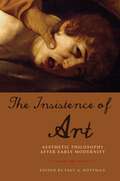
The Insistence of Art: Aesthetic Philosophy after Early Modernity
By Paul A. Kottman. 2017
Philosophers working on aesthetics have paid considerable attention to art and artists of the early modern period. Yet early modern…
artistic practices scarcely figure in recent work on the emergence of aesthetics as a branch of philosophy over the course the eighteenth century. This book addresses that gap, elaborating the extent to which artworks and practices of the fifteenth through the eighteenth centuries were accompanied by an immense range of discussions about the arts and their relation to one another.Rather than take art as a stand-in for or reflection of some other historical event or social phenomenon, this book treats art as a phenomenon in itself. The contributors suggest ways in which artworks and practices of the early modern period make aesthetic experience central to philosophical reflection, while also showing art’s need for philosophy.